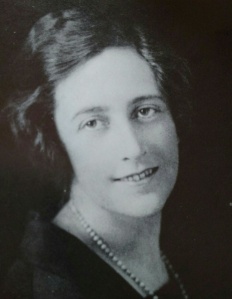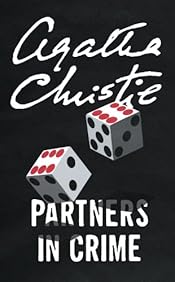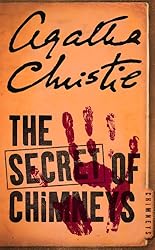
⭐⭐⭐⭐⭐
I love Agatha Christie’s crime fiction but I’ve held back from reading her other books written under the name of Mary Westmacott, not sure just what to expect. So, I was very glad to find that Absent in the Spring is just as good as her other books and I was thoroughly absorbed in the story of Joan Scudamore who was stranded in the desert, after visiting her daughter in Baghdad.
Agatha Christie managed to keep the true identity of Mary Westmacott a secret for fifteen years! Absent in the Spring is the one book she wrote that satisfied her completely – and having now read it I can see why. She wrote the book in just three days in 1944. It had ‘grown inside‘ her for six or seven years. She had visualised all the characters and they were there ready for her to write about them and she just had to get it down on paper, writing in a ‘white heat‘, without interruptions until it was finished, leaving her exhausted. She slept for more or less twenty-four hours afterwards. She took the title from Shakespeare’s sonnet that begins ‘From you I have been absent in the spring.’ (Sonnet 98)
It is a great example of an unlikeable character that makes fascinating reading – you don’t have to like a character to love a book. In her Autobiography she wrote that it was:
… the picture of a woman with a complete image of herself, of what she was, but about which she was completely mistaken. Through her actions, her feelings and thoughts this would be revealed to the reader. She would be, as it were, continually meeting herself, not recognising herself, but becoming increasingly uneasy. What brought about this revelation would be the fact that for the first time in her life she was alone – completely alone – for four or five days. (page 516)
The novel is set in Mesopotamia (corresponding to today’s Iraq, mostly, but also parts of modern-day Iran, Syria and Turkey) in a railway rest-house at Tel Abu Hamid on the Turkish border, where Joan is stranded, delayed by floods – no trains or vehicles can get through to Mosul, her next stop on her journey home to London. There are no other travellers there, only an Arab boy and an Indian servant who brings her meals, but who speak little English and there is nowhere to go, except to walk in the desert.
At first she occupies herself writing letters and reading the two books she has with her, The Power House by John Buchan and Memoirs of Lady Catherine Dysart. Then she starts thinking about herself and gradually relives her past life, all the time with a growing feeling of unease and anxiety as she reinterprets her past. She wonders, for the first time in her life what she is really like and what other people think of her, with that unsettling, anxious feeling that she is not the person she thought she was. And she resolves to put things right when she returns home.
She is jolted out of her complacency and self deception as she remembers how Rodney had looked as she watched him leave Victoria Station:
Suddenly, in the desert,with the sun pouring down on her, Joan gave a quick uncontrollable shiver.
She thought, No, no – I don’t want to go on – I don’t want to think about this …
Rodney, striding up the platform, his head thrown back, the tired sag of his shoulders all gone. A man who had been relieved of an intolerable burden …
Really, what was the matter with her? She was imagining things, inventing them. Her eyes had played a trick on her.
Why hadn’t he waited to see the train pull out?
…
She was imagining – Stop, that didn’t make it any better. If you imagined a thing like that, it meant that such an idea was already in your head.
And it couldn’t be true – the inference that she had drawn simply could not be true.
She was saying to herself (wasn’t she?) that Rodney was glad she was going away …
And that simply couldn’t be true! (pages 55-56)
It really is a most remarkable book. On the surface it is a simple story, but in fact it is a complex and in-depth character study, with a growing sense of tension. The setting adds to the uneasiness as Joan walks in the desert to get away from the rest-house, with its refuse dump of tins enclosed by a tangle of barbed wire, and a space where skinny chickens run about squawking loudly and with clouds of flies surrounding the area. There is a twist at the end of the book, which I had begun to anticipate as I approached the final pages, which rounded it off very well. An excellent book.
Now, I really must get hold of her other Mary Westmacott books!
My copy is a paperback, published by Fontana, 2nd impression 1983, 192 pages. This is the 4th book for my 10 Books of Summer 2018 Challenge.





 In
In 
